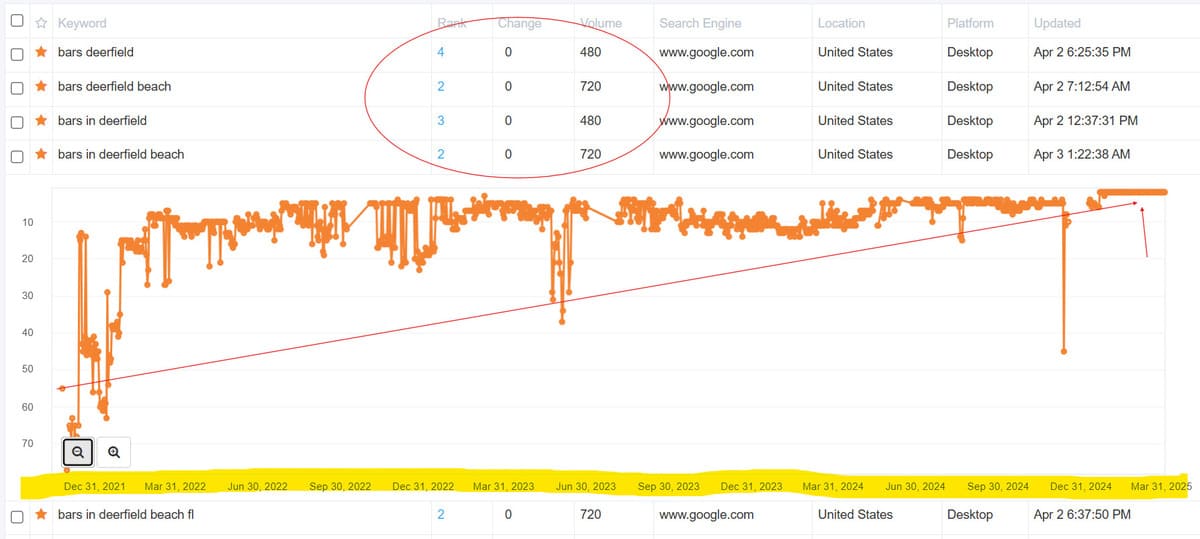When it comes to SEO, it is important that you work on site optimizing. It doesn’t matter how much you work on other elements of SEO if you aren’t getting on-page optimization right.
We understand that it can be confusing when you’re getting started optimizing your website. You don’t have to figure it out alone. Continue reading this article to learn how to improve your on-site SEO.
What Is On-Page SEO?
Before we get into how to do on-page SEO, let’s make sure we are all on the same page with what it is. On-page SEO is the act of optimizing your site in a way that it is easy for the search engines to know what you’re offering on a given page.
Since Google understands semantics, it isn’t as necessary to put every relevant keyword under the sun into your copy. If you can naturally fit a few variations in — great. If not — not a big deal.
On-page SEO helps both bots and humans understand your site better. Never optimize a site with only Google in mind of you’re likely to provide a less than desirable user experience.
High-Quality Content for the Win
Remember the wild wild west days of SEO when you could slap a page up with so-so content and still get rankings? The internet was starved for relevant information and if you knew how to build enough spammy backlinks, the internet was your playground.
Nowadays, that isn’t going to fly. If you want your website to rank, you have to provide high-quality content to your readers. More pages are getting manual reviews and if the content reviewer doesn’t believe your content is up to par — you might get a big thumbs down.
When you create your content, make sure you are answering the questions the searcher is asking in their mind. When you target a keyword, you have to be a bit of a mindreader as you’re creating content.
Page Titles
The title of your page is a great clue to Google for what your page is about. You may have also heard your page titles called title tags.
Page titles are working double duty by letting search engines and visitors know what your page is about. When you create your title, put your keyword into it as naturally as you can. You don’t want your title to sound awkward and forced.
Headers
The headers within your content are in place to help your visitors navigate your site but they are also more clues to search engines telling them what the site is about.
When you create headers, make sure you organize them in order. Header 1 is the page title so only use headers 2 and 3 in most cases. If you need to go really in-depth, you might use header 4.
When you create the headers, keep in mind that headers carry more weight for SEO than normal text. Make every header count.
Meta Descriptions
The meta description is what is going to show up in the search engines. This is a little snippet that lets people know what the page is about. This is also another page where you can put your target keyword.
Alt-text for Images
Alt-text is what shows up whenever the visitor wasn’t able to load the image for some reason. Beyond showing up when the visitor wasn’t able to load the image, it also gives another clue to search engines and helps with on-page SEO.
Page URLs
Your page URL could be something boring like mywebsite.com/page1 but that isn’t going to help your SEO. When you are constructing your URL structure, think about how both your visitors and the search engines are going to interpret the URL.
Is it going to be easy for them to figure out what section of your site they are on? Is it easy for them to use the URL as a clue to what the page is about?
You might consider not only having the keyword or title in the URL but you might also have the category the post is in be in the URL. Every helpful clue you can give the search engines and your visitor can help you rank in the search engines and retain more visitors for longer periods of time.
Internal Linking
Internal linking is a strategy that people are buzzing about these days more than ever. While many sites have been using it for a long time, other site owners are just learning how internal linking can benefit their SEO as well as their user experience.
Internal linking shows relevance between different pages on your own site. Let’s say that you have a website about health and fitness. You might write an article about the best exercises for core strength. Within this article, you could link to other articles on your site about yoga, pilates and other exercises that are helpful.
This will pass “link juice” from one page to the other. It will also give people the opportunity to visit other pages on your site. The more time people spend on your site, the more of a sign it is to search engines that your site is helpful to the searcher.
You’re a Site Optimizing Pro
Now that you know more about site optimizing, you know more than most people about on-page SEO. If you feel a little overwhelmed — don’t worry because we’re here to help.
When you need to get the best results out of your online marketing, we’re the people you want to talk to. Contact us today and get the help you need.





